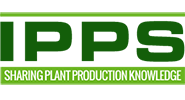
April 9, 2015 | OJ
California’s First Ever Statewide Mandatory Water Restrictions
AHS is dedicated to the true partnership and sharing of information we feel may affect our valued customers. With that we share the following article for your awareness to the seriousness of the ongoing California drought.
Retailer’s React: California’s First Ever Statewide Mandatory Water Restrictions
California Gov. Jerry Brown announced April 1 that, for the first time in state history, action will be taken to implement mandatory water restrictions.
The Governor has directed the State Water Resources Control Board to institute the reductions in cities and towns across the state to reduce water usage by 25 percent. The announcement comes following the lowest snowpack ever recorded in the High Sierra.
“Today we are standing on dry grass where there should be five feet of snow. This historic drought demands unprecedented action,” Brown said at the announcement, which took place on a mountain near Lake Tahoe. “As Californians, we must pull together and save water in every way possible.”
The reductions will save approximately 1.5 million acre-feet of water over the next nine months. Some of the other water-saving measures include:
- Replacing 50 million square feet of lawns with drought-tolerant landscaping in partnership with local governments;
- Directing the creation of a temporary consumer rebate program to replace old appliances with more water and energy efficient models;
- Requiring campuses, golf courses, cemeteries and other large landscapes to make cuts in water use;
- Prohibiting new homes and developments from using irrigation systems with potable water unless water-efficient drip irrigation systems are used, and ban watering of ornamental grass on public street medians.
According to Doug Parker, director of the California Institute for Water Resources, the water reductions might not have a direct impact on water supply for those in the horticulture industry, as the requirements are focused more on residential and municipal water uses.
“If anything, it’s going to change the demand side,” Parker says.
Parker hopes the water reductions will change consumers’ attitudes toward what types of plants they have in their landscape, and he believes it could further increase demand for drought tolerant products.
“If the government does call for the removal of 50 million square feet of turf, hopefully it gets people to really look at their landscaping,” Parker says. “That could be a major impact. All of that has to be re-landscaped some way.”
The ban on watering of grasses on public street medians, as well as the requirement to develop new homes with water-efficient drip irrigation systems will likely have an effect on the industry, too.
“Certainly, growers need to be thinking long-term,” Parker says.
Retailers Work To Educate Their Customers
“We were pretty certain that this was on the way, in some version or another, but did not have any particular insight into the specifics,” Ron Vanderhoff of Roger’s Gardens in Corona Del Mar, Calif. says.
Vanderhoff noted that the executive order is “very short on implementation details,” and that achieving the 25 percent reduction in water use will be the burden of the California State Water Resources Control Board, and ultimately, the local water agencies.
“In a bigger sense, the current water shortage only underlines a growing and appropriate movement toward gardens that reflect their location, their climate and the available natural resources,” he says.
In keeping with that movement, Roger’s Gardens has a multi-faceted public water education program, a successful California Friendly Gardening contest and numerous instructional videos and blogs. Its store landscape was converted to low-water California-friendly plants almost ten years ago, as well as being converted to weather-sensitive SMART irrigation, low-volume spray heads and zero-runoff irrigation.
Following the Governor’s announcement, Armstrong Garden Centers sent an email to its customers encouraging them to follow its water-saving tips, which include using mulch, watering deeper, but less often, using trigger sprayers and watering in the morning, to name a few.
“We live in one of the most beautiful states in the country and we have a responsibility to keep it that way while being reasonable with its resources,” Armstrong Garden Centers President Monte Enright says. “As a native Californian, I don’t believe that giving up and accepting that ‘brown is the new green’ is how we deal with the stewardship of our state. As a responsible horticulturist, I would like you to know that it doesn’t have to be that way.”
According to the email, Armstrong Garden Centers’ experts are available to customers to demonstrate how to have a healthier garden and landscape by watering less, but more effectively, and within compliance of current watering regulations.
Chris Martinez of Orchard Nursery & Florist, Inc. in LaFayette, Calif., says that, so far, the drought doesn’t seem to be impacting consumers’ behavior.
“It may be because we’re slightly insulated from most panic in our neighborhood, but I think that’s going to have to change,” Martinez says.
Martinez says she will likely reprise a class that was offered at the garden center once before called Watering 101, which teaches customers to water slower and less often. The information has also been put into a handout, and is given to anyone who asks any kind of question about how to water.
As for the impact on sales, Martinez says, “We’ll probably lose bedding plant sales. People will let their lawns die against their will and maybe, hopefully, we’ll sell a lot more mulch. Three inches saves 30 percent on your water use. We’ll probably sell more soaker hoses, too.”
The picture in this post is of Folsom Lake just North of Sacramento.
The article was originally published in ‘Today’s Garden Center’ online magazine.











